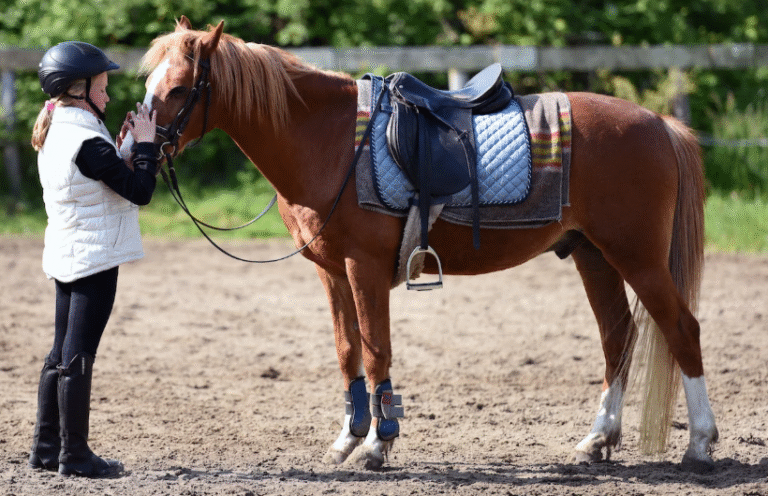Horse racing is one of the oldest and most prestigious sports in the world, combining speed, skill, and strategy. But behind the excitement on the track lies an array of specialized gear designed to keep both horses and jockeys safe, comfortable, and competitive. Each piece of equipment plays a crucial role in enhancing performance, ensuring control, and minimizing risk during high-speed races.
In this article, we’ll break down the essential gear for horses and jockeys, explaining what it is, why it matters, and how it contributes to success on race day.
Essential Equipment for Horses
1. Saddles
- Purpose: The racing saddle is much lighter than traditional riding saddles, often weighing less than 2 pounds.
- Function: Designed to give jockeys balance without weighing the horse down, maximizing speed and efficiency.
2. Bridles and Bits
- Bridle: The headgear that allows jockeys to control the horse.
- Bit: A metal piece placed in the horse’s mouth, attached to reins. It helps guide the horse’s direction and pace.
3. Reins
- Purpose: Straps connected to the bit and held by the jockey.
- Function: Allow precise communication between jockey and horse, ensuring control at high speeds.
4. Horseshoes
- Material: Usually made of lightweight aluminum in racing.
- Function: Provide traction, prevent injury, and enhance performance on different track surfaces (turf, dirt, or synthetic).
5. Blinkers
- Description: Small shields fitted onto the bridle.
- Purpose: Limit the horse’s peripheral vision, keeping it focused straight ahead and preventing distraction from other horses.
6. Saddle Cloth (Number Cloth)
- Purpose: Placed under the saddle, displaying the horse’s race number and sometimes sponsor branding.
- Function: Provides comfort and identifies the horse during the race.
7. Leg Wraps and Bandages
- Purpose: Protect the horse’s legs from injury during training and racing.
- Function: Reduce strain on tendons and provide extra support at high speeds.
8. Martingales and Nosebands
- Martingale: Helps control head movement, preventing the horse from throwing its head back.
- Noseband: Keeps the horse’s mouth closed, ensuring the bit stays in place.
Essential Equipment for Jockeys
1. Helmet
- Purpose: Protects against head injuries in case of falls or accidents.
- Feature: Must meet strict safety standards, often reinforced with lightweight but strong materials.
2. Silks (Racing Colors)
- Description: Brightly colored jackets and caps worn by jockeys.
- Purpose: Represent the horse’s owner and help spectators identify horses during the race.
3. Goggles
- Function: Protect jockeys’ eyes from dirt, mud, wind, and debris.
- Feature: Jockeys often wear multiple pairs, pulling them down mid-race if they get dirty.
4. Safety Vest
- Purpose: Worn under the silks, this lightweight vest protects the torso from impact.
- Importance: Mandatory in most jurisdictions to reduce the risk of serious injury.
5. Riding Boots
- Description: Tall, lightweight boots with a small heel.
- Function: Provide grip in the stirrups and stability while crouched in racing position.
6. Whip (Crop)
- Purpose: Used to encourage the horse to maintain focus and speed.
- Modern Rules: Whips are cushioned and regulated to ensure animal welfare.
7. Gloves
- Function: Give jockeys a better grip on the reins, especially in wet or muddy conditions.
Why the Right Gear Matters
- Safety: Both horse and rider are vulnerable at high speeds, so protective gear is essential.
- Performance: Lightweight saddles, proper shoes, and blinkers can improve a horse’s racing efficiency.
- Control: The right bridles, reins, and nosebands ensure smooth communication between jockey and horse.
- Identity & Tradition: Silks and saddle cloths maintain racing tradition while helping fans identify horses.
Conclusion
Horse racing is more than just speed—it’s a careful balance of preparation, equipment, and skill. From the lightweight saddle that allows a horse to run freely to the helmet that protects a jockey’s life, every piece of gear has a vital purpose. Understanding the essential equipment not only highlights the science and safety behind the sport but also deepens appreciation for the teamwork between horse, rider, and trainer that makes racing possible.
